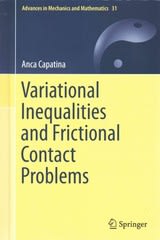Answered step by step
Verified Expert Solution
Question
1 Approved Answer
Answer this question and explain why At a company picnic, many of the attendees became ill the next day. The manager suspects that the illness
Answer this question and explain why
 At a company picnic, many of the attendees became ill the next day. The manager suspects that the illness may be related to the potato salad, which was in the sun for a long period of time. The manager was able to contact 120 attendees and classified each person according to whether or not the person got sick and whether or not the person ate the potato salad. The table shows the results. Ate the potato salad Yes No Total Got sick? Yes 28 15 43 No 42 35 77 Total 70 50 120 The difference in proportions between the two groups (ate the potato salad - did not eat the potato salad) = 15 50 = 0.10. One hundred trials of a simulation were performed to see what differences in proportions would occur due to only chance variation, assuming that the potato salad is not related to getting sick. That is, the 43 attendees that got sick and the 77 attendees that did not get sick were randomly assigned to two groups of size 70 and 50. The results of the simulation are shown below. . . .. . ... ........... .......... ...... .... .... . .. -0.3 -0.25 -0.2 -0.15 -0.1 -0.05 0 0.05 0.1 0.15 0.2 Simulated difference in sample proportion of attendees that got sick Is there convincing evidence that the proportion of people who got sick after eating the potato salad is significantly greater than the proportion of people who didn't eat it but still got sick? Explain your reasoning. O No. The simulation shows there is a 5% chance of getting a difference of proportions that big or bigger when there truly is no difference O Yes. There was a difference of 0.10 between the potato salad eaters and those who did not eat potato salad, which is greater than 0.05. This proves that the potato salad made more people sick. O Yes. The simulation shows there is a 5% chance of getting a difference of proportions that big or bigger when there truly is no difference O Yes. The simulation shows there is a 16% chance of getting a difference of proportions that big or bigger when there truly is no difference. O No. The simulation shows there is a 16% chance of getting a difference of proportions that big or bigger when there truly is no difference
At a company picnic, many of the attendees became ill the next day. The manager suspects that the illness may be related to the potato salad, which was in the sun for a long period of time. The manager was able to contact 120 attendees and classified each person according to whether or not the person got sick and whether or not the person ate the potato salad. The table shows the results. Ate the potato salad Yes No Total Got sick? Yes 28 15 43 No 42 35 77 Total 70 50 120 The difference in proportions between the two groups (ate the potato salad - did not eat the potato salad) = 15 50 = 0.10. One hundred trials of a simulation were performed to see what differences in proportions would occur due to only chance variation, assuming that the potato salad is not related to getting sick. That is, the 43 attendees that got sick and the 77 attendees that did not get sick were randomly assigned to two groups of size 70 and 50. The results of the simulation are shown below. . . .. . ... ........... .......... ...... .... .... . .. -0.3 -0.25 -0.2 -0.15 -0.1 -0.05 0 0.05 0.1 0.15 0.2 Simulated difference in sample proportion of attendees that got sick Is there convincing evidence that the proportion of people who got sick after eating the potato salad is significantly greater than the proportion of people who didn't eat it but still got sick? Explain your reasoning. O No. The simulation shows there is a 5% chance of getting a difference of proportions that big or bigger when there truly is no difference O Yes. There was a difference of 0.10 between the potato salad eaters and those who did not eat potato salad, which is greater than 0.05. This proves that the potato salad made more people sick. O Yes. The simulation shows there is a 5% chance of getting a difference of proportions that big or bigger when there truly is no difference O Yes. The simulation shows there is a 16% chance of getting a difference of proportions that big or bigger when there truly is no difference. O No. The simulation shows there is a 16% chance of getting a difference of proportions that big or bigger when there truly is no difference Step by Step Solution
There are 3 Steps involved in it
Step: 1

Get Instant Access to Expert-Tailored Solutions
See step-by-step solutions with expert insights and AI powered tools for academic success
Step: 2

Step: 3

Ace Your Homework with AI
Get the answers you need in no time with our AI-driven, step-by-step assistance
Get Started


